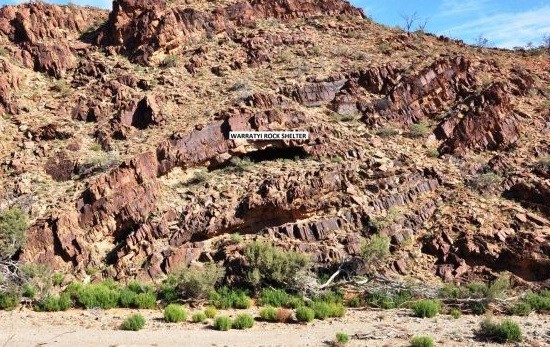Popular Reads
Top Results
Can't find what you're looking for?
View all search resultsPopular Reads
Top Results
Can't find what you're looking for?
View all search resultsOne of Australian prehistory's most important sites found by chance
Change text size
Gift Premium Articles
to Anyone
A
boriginal Australian artifacts were discovered by chance at a site called Warratyi inside a rock shelter 550 kilometers north of Adelaide.
“A man getting out the car to go to the toilet led to the discovery of one of the most important sites in Australian prehistory," said lead author Giles Hamm, a consultant archaeologist and doctoral student at La Trobe University in Melbourne as reported by ABC.
Hamm found the site while surveying gorges in the northern Flinders Ranges. He noticed the slightly blackened roof over the shelter about 20 meters above the creek bed and concluded that it was a remnant of human activity, possibly when they built a campfire in the shelter.
According to the research findings, Aboriginal Australians had inhabited the country's arid interior 49,000 years ago, or around 10,000 years earlier than previously estimated. The artifacts found at the site also showed the development and use of bones and stone axes and the use of ochre in Australia.
(Read also: Who made terracotta warriors? Read the signature)
Hamm has worked with the indigenous Adnyamathanha people for nine years and has excavated and procured 4,300 artifacts and 200 bone fragments that originated from the remains of 16 mammals and one reptile. After dating the findings, it was concluded that humans lived in the site 46,000 to 49,000 years ago.
“The climate was probably less arid when they sheltered there,” Hamm said. “In a way, they were trapped in the Flinders Ranges due to the site’s fragility in case the climate changed.”
Another significant discovery Hamm found at the site was the use of ochre in Australia and Southeast Asia around 49,000-46,000 years ago. He also discovered remnants of early technological developments, such as bone needles (40,000-38,000 years ago), wood-handled stone tools (24,000 years ago) and gypsum use (40,000-33,000 years ago). Furthermore, hafted axe technology was also part of the research findings, dated about 38,000 years. (fmn/kes)











